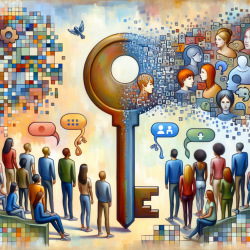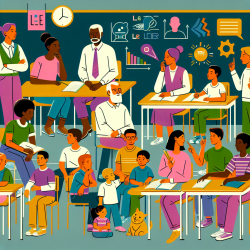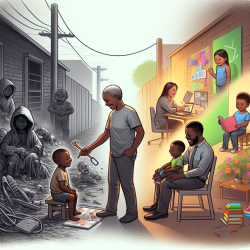Introduction
The mental health crisis among youth in the United States is a growing concern, with traditional face-to-face therapy often inaccessible due to various barriers. Digital Mental Health (DMH) tools, such as apps and online platforms, offer a promising solution by providing scalable and accessible mental health support. However, the success of these tools hinges on their ability to reach and engage the youth they aim to serve. Recent research highlights the importance of involving youth as active partners in the design and implementation of DMH tools, particularly for those from minoritized backgrounds.
The Power of Youth Partnerships
Research conducted by Stiles-Shields et al. (2023) emphasizes the necessity of shifting from adult-driven design to community-based youth partnerships. By involving youth as integral partners, DMH tools can be tailored to better meet their needs and preferences. This approach not only enhances the relevance and effectiveness of these tools but also empowers young individuals by valuing their insights and lived experiences.
Implementing Youth Partnerships in Practice
Practitioners looking to improve their skills in DMH implementation can take several steps to incorporate youth partnerships:
- Engage Youth Early: Involve young people from the initial stages of design and development. Their input can shape the direction and features of DMH tools, ensuring they resonate with the target audience.
- Compensate and Credit Youth: Recognize the contributions of youth by providing financial compensation and crediting them appropriately. This not only incentivizes participation but also acknowledges their role as co-creators.
- Recruit Diverse Youth: Ensure representation from youth with socially complex needs (SCN) to address a broad spectrum of experiences and challenges. This diversity enhances the generalizability and effectiveness of DMH tools.
- Include Caregivers: Collaborate with caregivers, who play a crucial role in supporting youth mental health. Their involvement can help bridge gaps in access and understanding.
Overcoming Barriers to Reach and Uptake
Despite the potential of DMH tools, reaching and engaging youth remains a challenge. Systemic and individual-level barriers often prevent these tools from reaching their intended audience. To address these issues, practitioners can:
- Leverage Trusted Sources: Identify and collaborate with trusted individuals and environments, such as schools and community centers, to introduce DMH tools to youth.
- Utilize Familiar Platforms: Meet youth where they are by integrating DMH tools into platforms they already use, such as social media and mobile apps.
- Ensure Accessibility: Consider the digital divide and work to make DMH tools accessible to youth from diverse socioeconomic backgrounds.
Conclusion
Incorporating youth partnerships in the design and implementation of DMH tools is not only a matter of effectiveness but also of justice. By valuing the voices and experiences of young people, particularly those from minoritized backgrounds, we can create more inclusive and impactful mental health solutions. Practitioners are encouraged to embrace this collaborative approach, paving the way for a brighter future in youth mental health.
To read the original research paper, please follow this link: Increasing digital mental health reach and uptake via youth partnerships.










